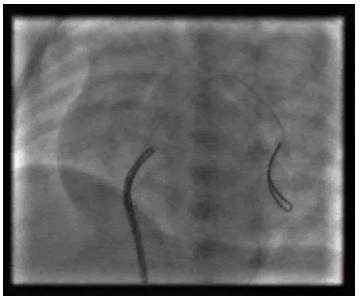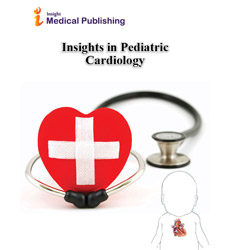Unconventional use of NIH Angiographic Catheter in Resource Limited Setup: A Brief Experience
Nurul Islam*, Siddhartha Saha and Soumyadeep Biswas
Department of Paediatric Cardiology, Health world Hospitals, Durgapur, West Bengal, India
- *Corresponding Author:
- Nurul Islam
- Department of Paediatric Cardiology, Health world Hospitals, Durgapur,
West Bengal, India,
Tel: 919911000000;
Email: nurulpedscardio@gmail.com
Received date: January 09, 2023, Manuscript No. IPIPC-23-14589; Editor assigned date: January 11, 2023, PreQC No. IPIPC-23-14589 (PQ); Reviewed date: January 20, 2023, QC No. IPIPC-23-14589; Revised date: January 31, 2023, Manuscript No. IPIPC-23-14589 (R); Published date: February 07, 2023, DOI: 10.36648/Insight Pediatric Card.7.1.66
Citation: Islam N, Saha S, Biswas S (2023) Unconventional use of NIH Angiographic Catheter in Resource Limited Setup: A Brief Experience. Insigh Pediatr Card Vol.7 No.1: 66.
Introduction
NIH (National Institute of Health) catheter is a side hole angiographic catheter without any end hole. NIH catheter prepared by USCI (Medtronic or Bard Inc.) is made of woven Dacron with nylon reinforcement and is stiff. It has 6 side holes. Other variety manufactured by Cook or Cordis are little different in being less stiff and also having less number of holes so they carry more chance of complications. The angiographic catheter with a closed end can be used equally well in both sampling and pressure recordings except in the “wedge” positions and furthermore the blind end helps to prevent recoiling during high-pressure injections. NIH catheter is usually not used routinely for crossing with a wire through it [1].
Description
All NIH variety of catheters have only side holes so while doing angiography there is less chance of injuries like myocardial rupture, dissection, staining especially in a small heart, and less chance of myocardial irritation resulting in ventricular ectopics. For all those reasons NIH catheter are used primarily for angiography especially right ventricle, left ventricle and pulmonary vasculature [2]. In a resource limited set up with less availability of catheters, NIH catheter can be used beyond the convention-to cross a stenotic valve. In our institution we have used NIH catheter multiple times, for crossing the stenosed pulmonary valve while doing Balloon pulmonary valvotomy [3,4]. After taking RV hemodynamics and angiography with NIH, we pass 018 J tips Terumo or 014 coronary wires through NIH catheter and the tip comes through one of the side holes. Because of ‘J-tip’ nature of the wire, it can be easily negotiated across the side holes by cork-screw movement. After that we cross the stenosed valve and the NIH catheter is pulled back over the J tip wire (Figure 1).
The rest of the procedure is done as per standard protocol. There are few advantages of using the catheter:
• In the same angiographic setting NIH catheter is also used for crossing the valve.
• Stainless steel braided NIH catheter gives better stability in side hypertrophied RV with presence of significant tricuspid regurgitation and less ectopics on ECG monitor.
• As the wire comes out from side holes, lesser chance of myocardial injury compared to end-hole catheter and wire.
• Using NIH catheter especially in newborn babies help in reducing the procedure time [5].
Conclusion
Though NIH catheter is only side hole, from our institutional experience it can be also used to cross a stenosed valve in difficult situation or resource limited set up. The NIH catheter can also be used beyond the convention. Conflict of interest: None of the makers of NIH catheter including Medtronic or Bard Inc have in any way sponsored this study.
References
- Mullins CE, Ludomirsky A, O'Laughlin MP, Vick III GW, Murphy DJ, et al. (1988) Balloon valvuloplasty for pulmonic valve stenosis-twoâ?ÂÂÂÃÂyear followâ?ÂÂÂÃÂup: Hemodynamic and doppler evaluation. Cathet Cardiovasc Diagn 14: 76-81.
- Khan MA, Al-Yousef S, Huhta JC, Bricker JT, Mullins CE, et al. (1989) Critical pulmonary valve stenosis in patients less than 1 year of age: Treatment with percutaneous gradational balloon pulmonary valvuloplasty. American Heart J 117: 1008-1014.
- Marantz PM, Huhta JC, Mullins CE, Murphy DJ, Nihill MR, et al. (1988) Results of balloon valvuloplasty in typical and dysplastic pulmonary valve stenosis: Doppler echocardiographic follow-up. J American Colle Cardiol 12: 476-479.
- Bagad AS, Joseph JA, Bhaskaran N, Agarwal A (2013) Comparative evaluation of anti-inflammatory activity of curcuminoids, turmerones and aqueous extract of Curcuma longa. Adv Pharmacol Sci 2013: 805756.
- Newton K, Dixit VM (2012) Signaling in innate immunity and inflammation. Cold Spring Harbor Perspectives Biol 4: 6049.
[Crossref] [Googlescholar] [Indexed]
Open Access Journals
- Aquaculture & Veterinary Science
- Chemistry & Chemical Sciences
- Clinical Sciences
- Engineering
- General Science
- Genetics & Molecular Biology
- Health Care & Nursing
- Immunology & Microbiology
- Materials Science
- Mathematics & Physics
- Medical Sciences
- Neurology & Psychiatry
- Oncology & Cancer Science
- Pharmaceutical Sciences

